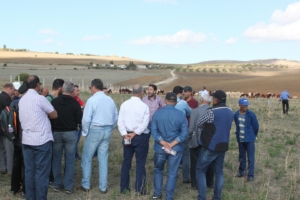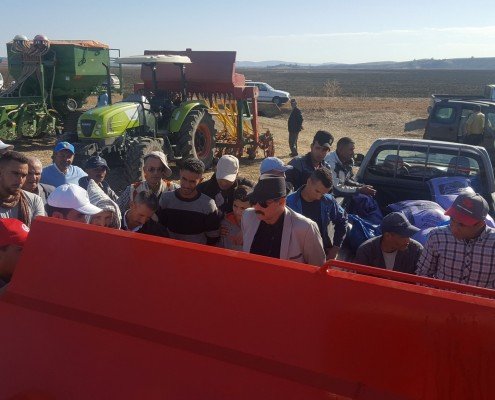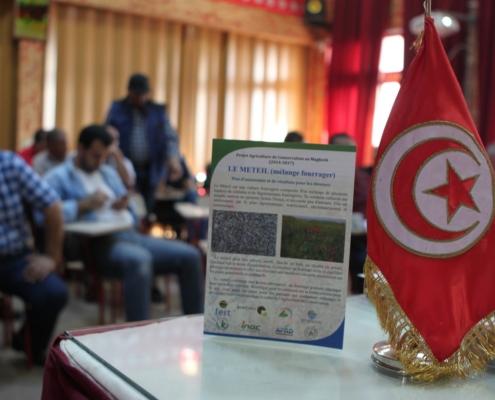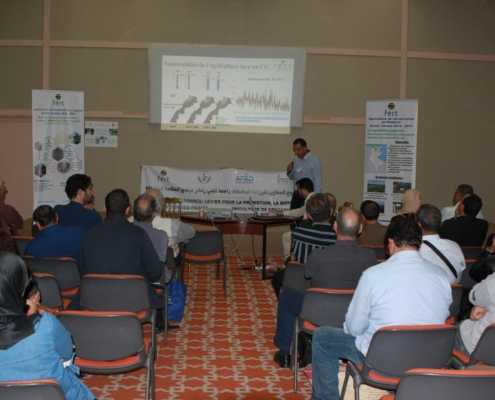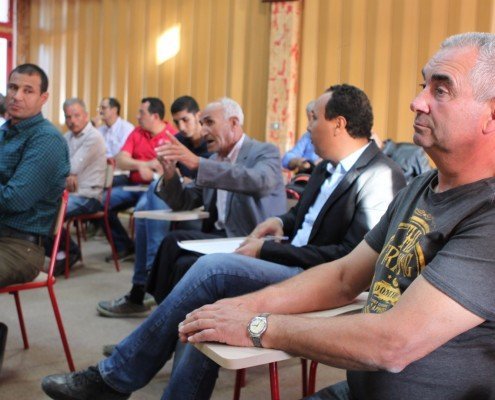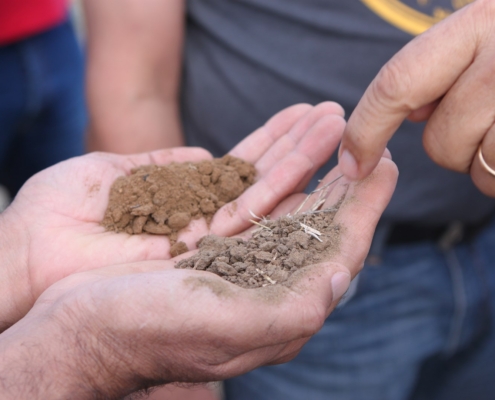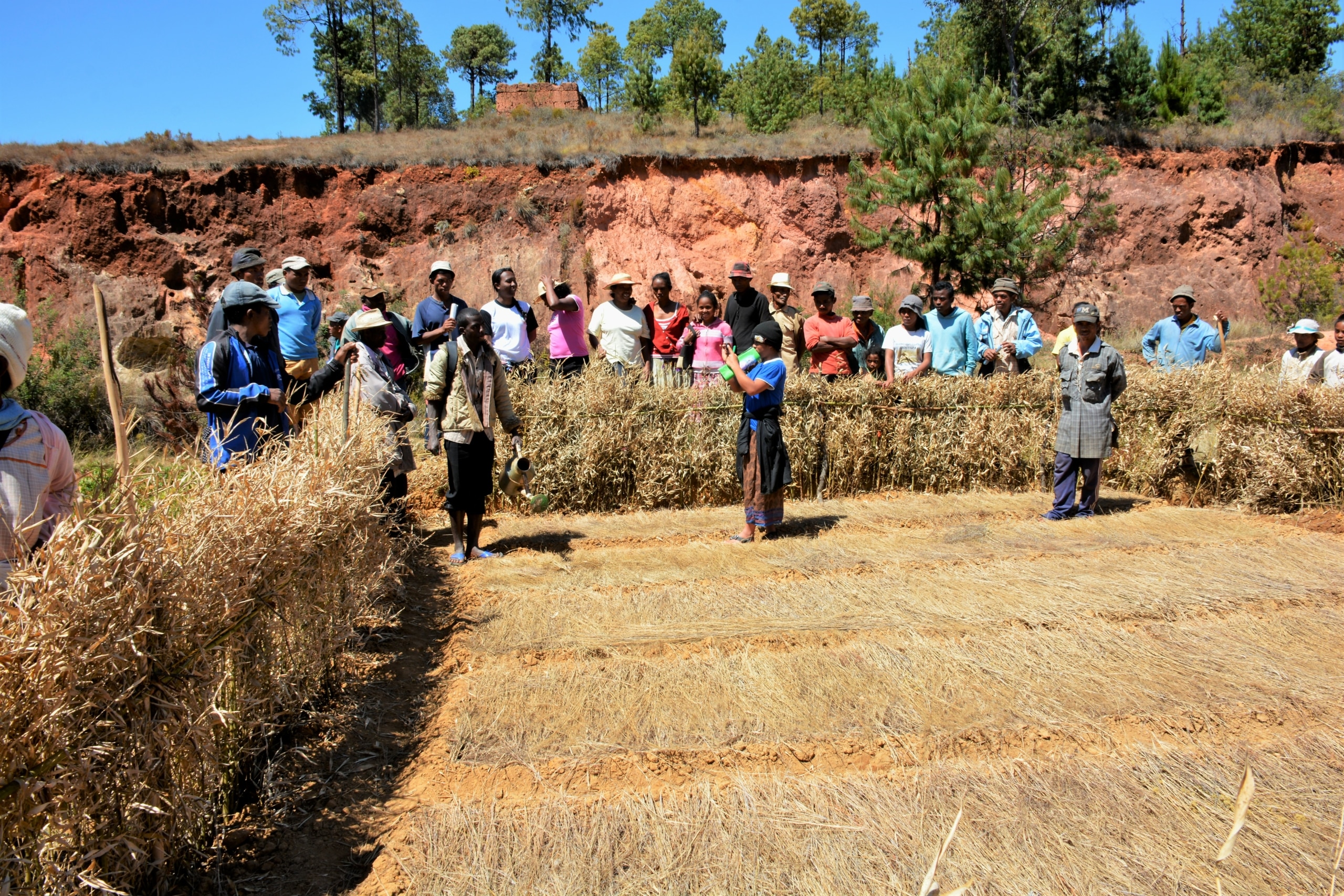Which cover crops should be planted to protect the soil? Which seed drills to use? How to diversify the rotation with meshes? What role for FOs in conservation agriculture (CA) How can we get more visibility and listen to national decision-makers?
These were some of the questions that came up during the exchanges between actors of the CA Maghreb project during their meeting in Tunisia at the beginning of November 2017.
In anticipation of the closure of the AC Maghreb action at the end of 2017, some forty farmers, technicians and researchers who had participated in activities since 2014 met in the north-western part of Tunisia, then in Tunis, to discuss the achievements and follow-up to be given to the actions carried out together. The programme of the meetings included field visits, technical interventions, strategic reflection workshops and a conference-debate organized in the margins of the Siamap, the Tunis agriculture fair.
Several dissemination media were finalized for the occasion:
- Two technical leaflets have been published in Arabic and French; one on the innovative approach of permanent plant cover (luzerne) and the other on the interest of meslin (fodder mixes) in rotations in conservation agriculture;
- Three short videos were also made, two on these same themes and another one more globally on the benefits for farmers of living soils.
At the end of the project, 14 local or national POs (1350 members) and 13 partner institutions are now forming the “Maghreb network of the CA”; these organisations are also part of the Mediterranean AgroSystems Innovations Network (RCM) at the Mediterranean regional level. They pledged to pursue field actions and strengthen advocacy for KT with decision-makers. Indeed, given the problems linked to soil erosion and loss of soil fertility, linked to the impacts of climate change, the development of innovative production systems such as conservation agriculture will only become more widespread in the years to come.

